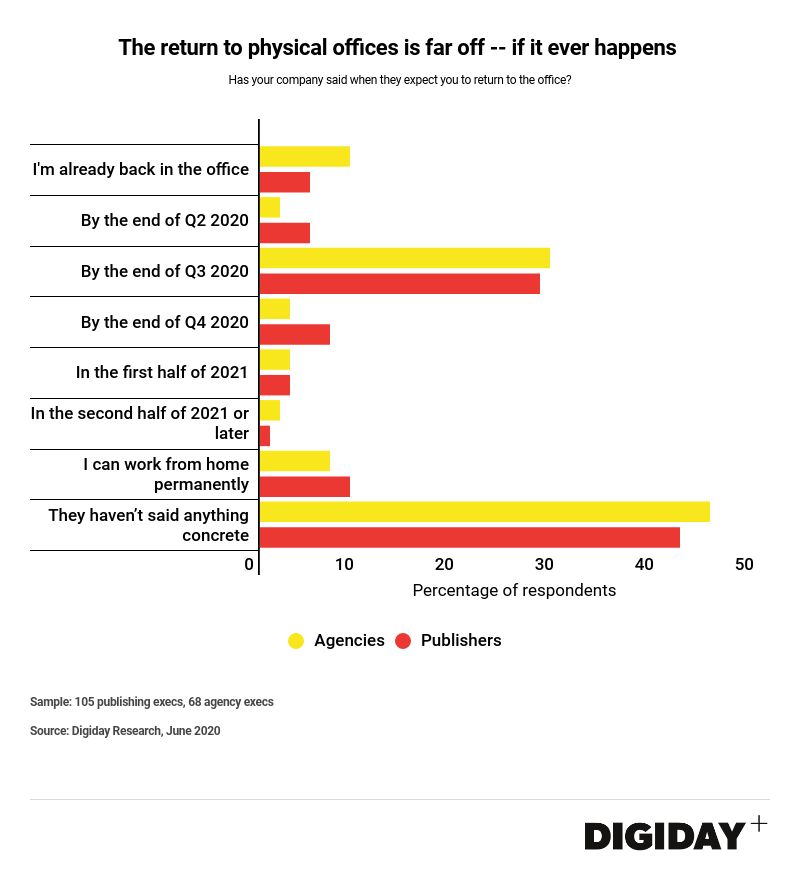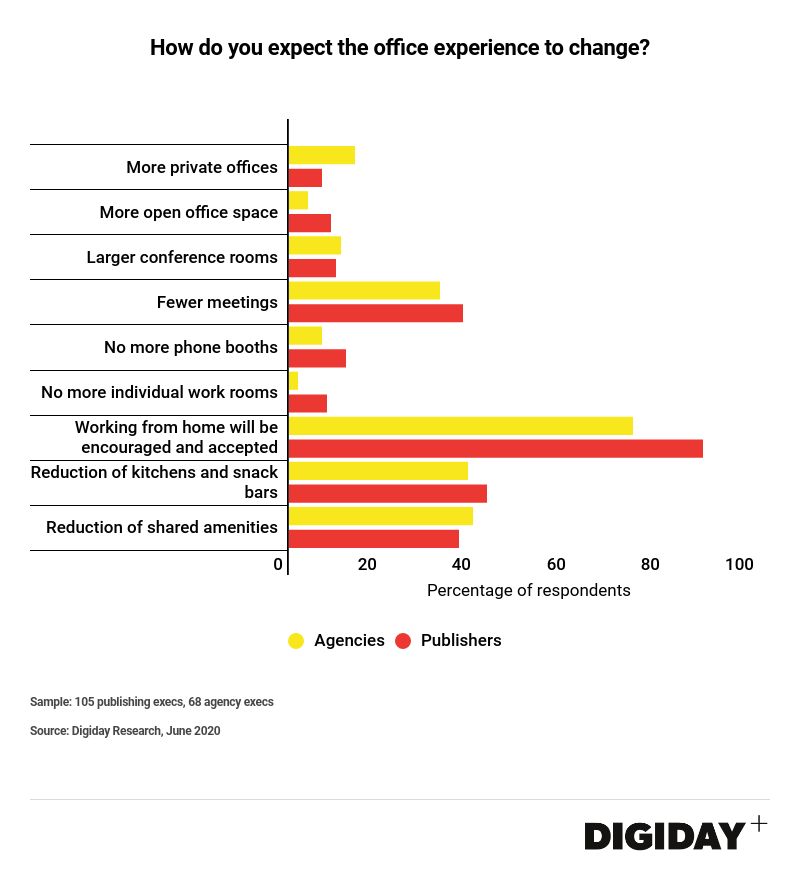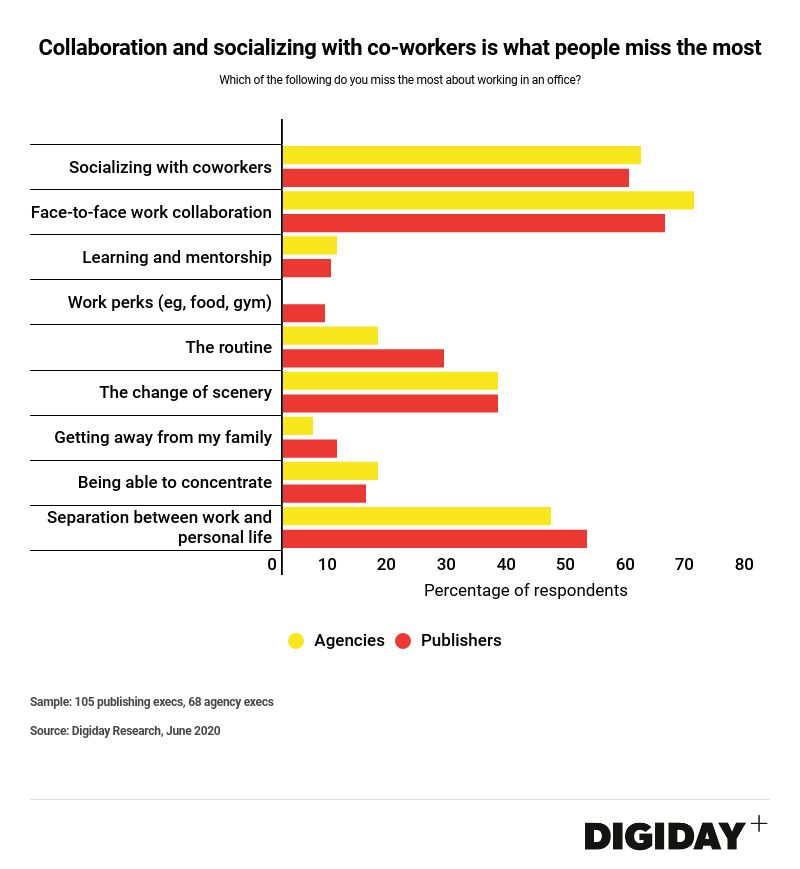Register by Jan 13 to save on passes and connect with marketers from Uber, Bose and more
Digiday Research: What return to the physical office looks like for media workers — fewer meetings, less snacks

This research is based on unique data collected from our proprietary audience of publisher, agency, brand and tech insiders. It’s available to Digiday+ members. More from the series →
The return to the physical office is a far off idea for most in the industry.
A new Digiday survey found that for 42% of media industry workers, their company hasn’t said anything concrete about when they’re expected to return back to the office. For 28% of employees, they expect to be back in the physical office by the end of the third quarter of this year. About 9% said they have been told they can work from home permanently.
Inside ad agencies, about 45% said their employers hadn’t said anything concrete, while for 29%, they expected to be back in the office by the end of the third quarter as well. About 7% were told they can work from home permanently.

Of course, the return to physical offices is anything but normal. A whopping 73% of agency workers and 88% of media workers said working from home will now be encouraged and accepted. About 39% of agencies and 36% of publishing workers said they expect a reduction in shared amenities and around 40% said they expected fewer snacks. And 32% of agencies, and 37% of publishing workers said they expect fewer meetings to take place.

As we previously reported, at agencies and publishers, 58% of respondents said they missed working in an office. But what they miss varies — and this is what employers are trying to figure out when they seek to replicate the in-office collaboration and serendipity so missing from remote workplaces.

More in Media

Future starts to sharpen its AI search visibility playbook
Future is boosting AI search citations and mentions with a tool called Future Optic, and offering the product to branded content clients.

Digiday’s extensive guide to what’s in and out for creators in 2026
With AI-generated content flooding social media platforms, embracing the messiness and imperfection of being human will help creators stand out in the spreading sea of slapdash slop.

Media Briefing: Here’s what media execs are prioritizing in 2026
Media executives enter 2026 weathered by disruption, but refocused on AI revenue, brand strength and video and creator opportunities.





